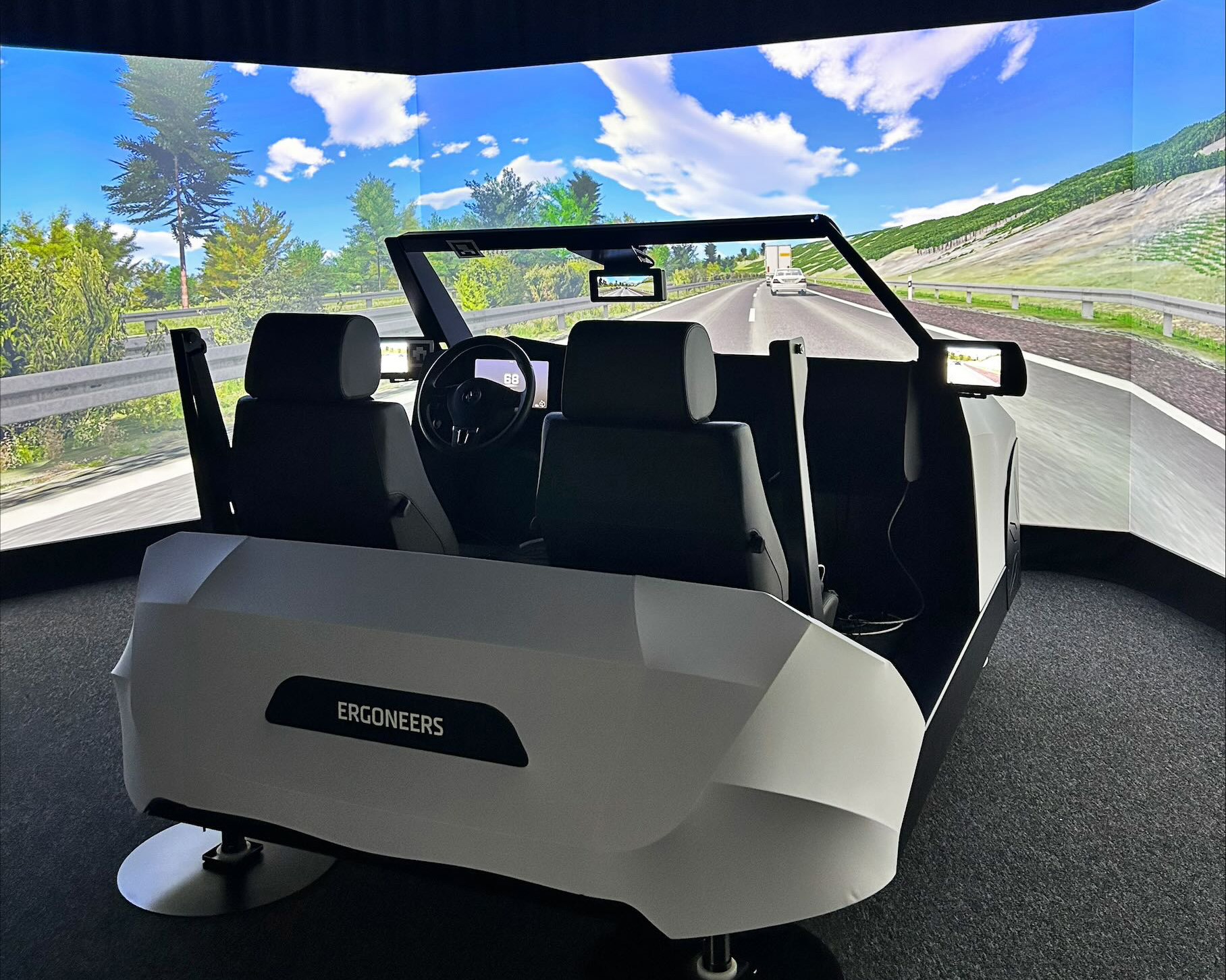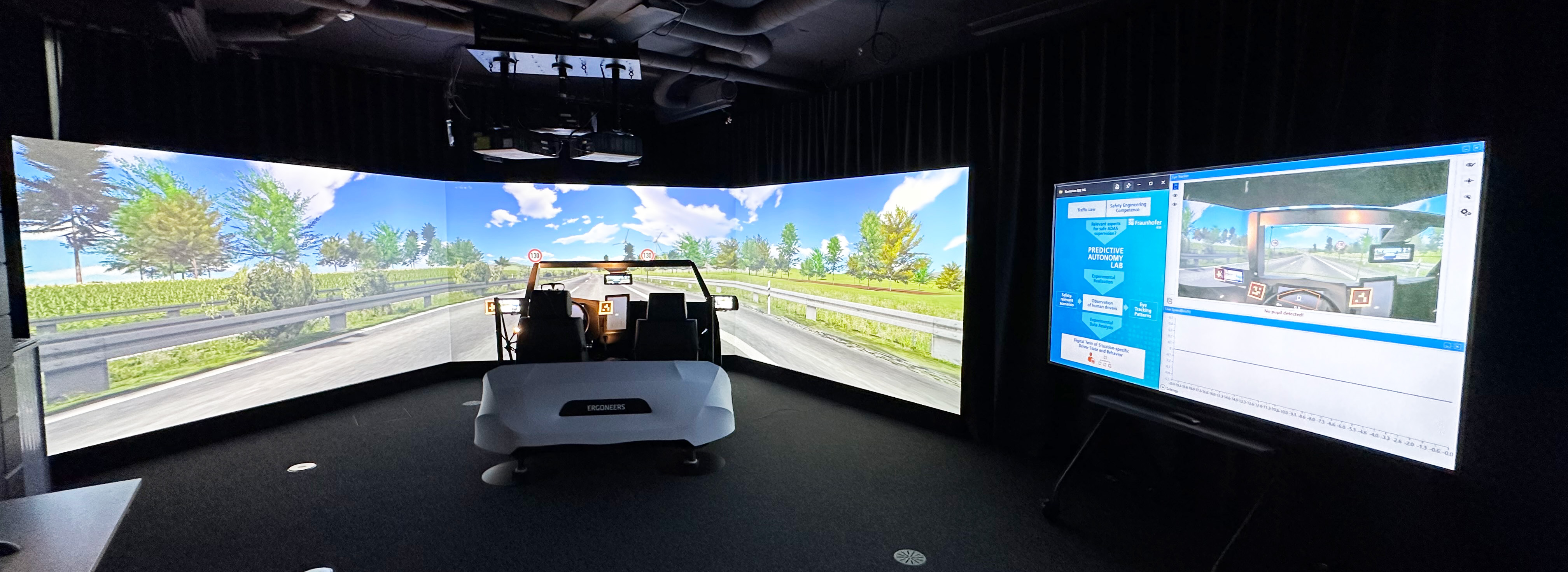The laboratory is used for empirical driving behavior research from a safety perspective. The influences of a human driver's environment on their driving behavior can be investigated here. To this end, the scientists at Fraunhofer IESE conduct driving simulator studies with appropriate sensor technology in order to understand the causal behavioral decisions of the test subjects. Examples of this include monitoring systems such as eye trackers and the physiological observation of vital data.
The focus of the driving simulator is on understanding human behavior in various safety-critical driving situations. This enables – together with suitable methods and tools – the generation of scientifically validated, situation-sensitive and safe driving models. The driving models can be used profitably in safety validation as part of highly automated driving systems and advanced driver assistance systems in the automotive industry. On the one hand, this allows real-to-sim gaps to be minimized. The aim is to obtain reliable and valid simulation results that can be used for decision-making in practice. On the other hand, the driving models can be used to reduce unnecessary safety interventions in safety monitoring systems.
Fraunhofer IESE offers infrastructure services in the context of safety and driving behavior research: Companies from the automotive industry can use not only the technical environment, but also the expertise from numerous scientific research projects, e.g. to integrate situation-sensitive knowledge into their driving systems, to have driving strategies independently evaluated by Fraunhofer, or to evaluate new system concepts.

